
Japanese folklore meets anime in Kyoto
by Roland Kelts Japan Times Jan 21, 2017
The colors were jarring. Beneath the vermillion torii gates of Kyoto’s Shimogamo Shrine and surrounded by the olive broadleaves of Tadasu Forest was a pool of furry, bright yellow ponchos, decorated with the brown facial features, rounded ears and bulbous oblong tails of the tanuki, or Japanese raccoon dog.
Out of roughly 2,500 applicants, 200 anime fans, the majority of them young women, won entry to the Jan. 12 “Uchoten Kazoku 2 (The Eccentric Family 2) Event: Tanuki Gathering at the Forest of Tadasu, Shimogamo Shrine” via raffle tickets sold at ¥2,000 each in November and December. The lucky fans had access to an intimate seating area to view the solemn Shinto blessing of the series’ second season, which premieres on April 9. Even Kyoto’s mayor, Daisaku Kadokawa, arrived to officially christen the show as his city’s “Special Goodwill Ambassador.”
So-called live events, bringing fans face-to-face with the creatives behind their favorite shows in real-world settings, comprise the most active growth categories for the anime business, according to industry analyst Tadashi Sudo of the site, animeanime.jp.
Shimogamo Shrine and its ancient forest are UNESCO World Heritage Sites that date back to the sixth century, prior to the city’s establishment as Japan’s capital in 794. “The Eccentric Family 2” launch ceremony last week was the first of its kind on the grounds of one of Japan’s oldest and most hallowed locales, and its producers made clear that it wasn’t for financial gain, at least not for them.
“It’s a win-win,” one studio staffer told me as puzzled tourists ambled past us, eyeing the throng of golden tanuki costumes. “(Shinto) shrines need the money, and we need the publicity.”
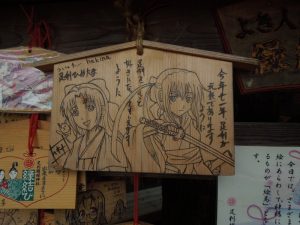
Anime fans are increasingly making their presence felt at shrines and power spots
The anime series is based on the novels of author Tomihiko Momiri and features three sets of characters: two types of yokai (supernatural spirits), the mischievous, shape-shifting tanuki and the more godly, bird-like tengu (goblins), and standard-issue human beings — all of whom interact and attempt to peacefully coexist in contemporary Kyoto. Its protagonist is a tanuki boy named Yasuburo, the third son of the Shimogamo family, whose home is the shrine itself.
“(The) shape-shifting ways (of yokai) are a huge influence on Japanese pop culture,” says Matt Alt, Tokyo-based author and co-translator of the just-published “Japandemonium Illustrated: The Yokai Encyclopedias of Toriyama Sekien.” “Tanuki and tengu are two of the most well-known yokai (in Japan), the subject of all kinds of folk tales and even idioms still used in everyday speech.”
Yasuburo often appears in the form of a cute teenage girl and is obsessed with a fashionable young human woman named Benten, who acquired and learned to use magical powers from the tengu master who raised her. Benten is the only female member of a private club called “The Friday Fellows,” who ritually consume tanuki stew at their year-end parties. Some years before the show’s first episode, they ate Yasuburo’s father, Soichiro, once the lord of all Kyoto tanuki, and Benten may have been the cause of his demise.
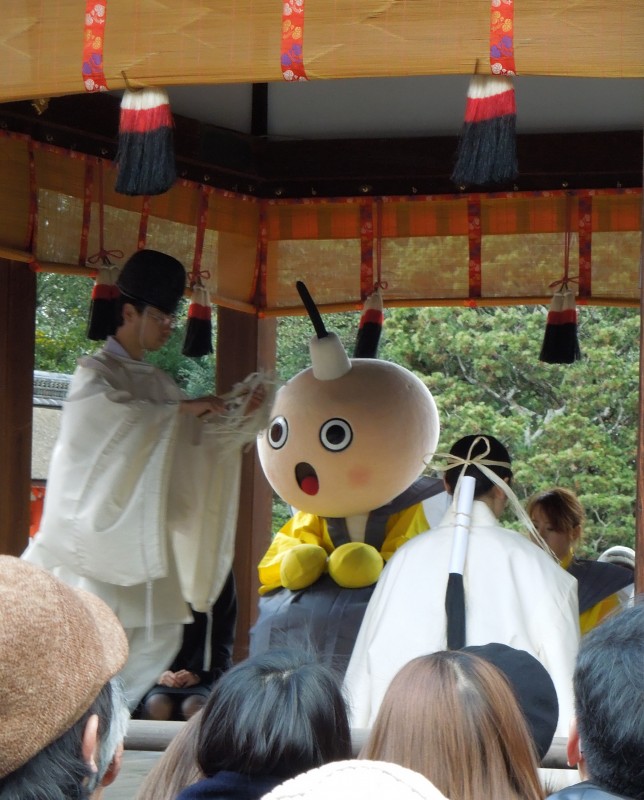
Shimogamo is not unused to working with works of fiction, here blessing the ‘character’ for Kyoto Station
In short, there’s a lot going on. In its best episodes, “The Eccentric Family” balances its trio of character sets against a meticulously rendered backdrop that is pure modern Kyoto, with its low boxy office buildings, broad avenues and intersections bordered by alleyways, and bucolic oases of parks, temples and shrines. Segues between scenes show a map of Kyoto identifying the exact location of the action. The tone shifts seamlessly from romantic comedy to farce to serious drama about the need to make life meaningful and ward off loneliness and boredom.
Season one of the series aired in 2013 and became an unexpected TV hit for its studio, the Toyama-based Progressive Animation (P.A.) Works, whose projects focus on Japan’s traditional and/or rural stories and rituals. The studio was eager to produce a second season, but there was a problem: Novelist Momiri had writer’s block; his second novel was finally published in 2015.
“Kyoto is the perfect setting for audiences to believe in the supernatural, in the darkness and light of our world and other worlds,” says [studio producer] Horikawa. “The city has such an eventful history. You can put anything in it and people will believe it could happen here, because it has all happened here.”
“You know, I used to get orders from my bosses for overseas releases — ‘Don’t use kanji on signs, make universal landscapes, don’t make anything too Japanese.’ But I went to America for the first time last summer, and in Los Angeles, people kept telling me that they love our work, especially ‘Shirobako’ (‘White Box’) and ‘The Eccentric Family.’ I realized that when foreign audiences see tengu and tanuki running and flying around Kyoto today, they get really excited, and they want to know more.”
*******************
Roland Kelts is the author of “Japanamerica: How Japanese Pop Culture has Invaded the U.S.” He is a 2017 Nieman fellow in journalism at Harvard University.
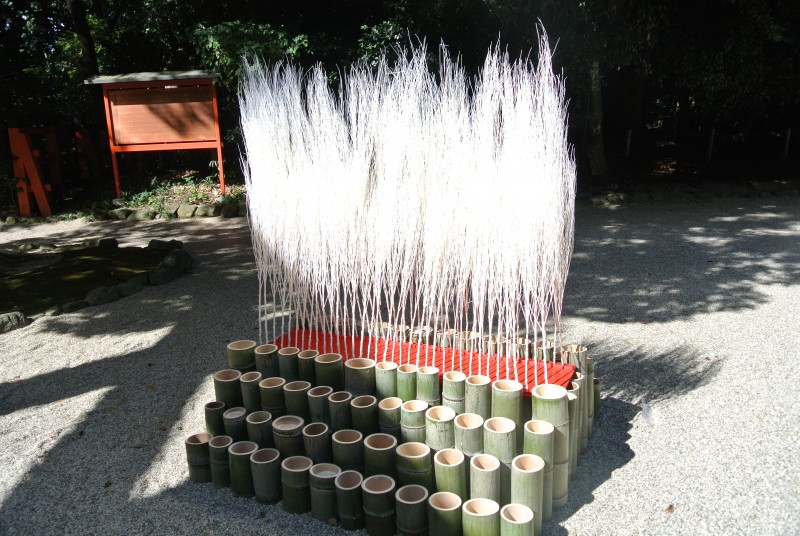
Shimogamo Shrine often uses its spacious grounds to pull in potential worshippers, such as art displays and dance competitions
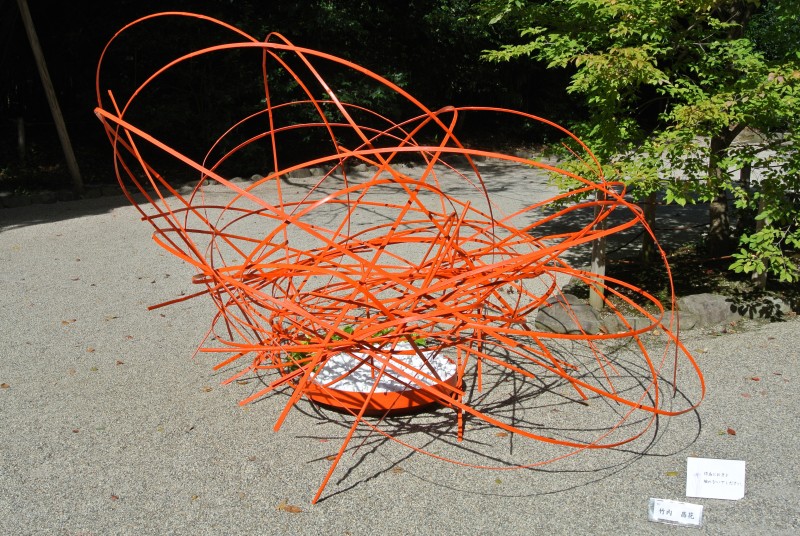
Art objet at one of Shimogamo’s many events throughout the year
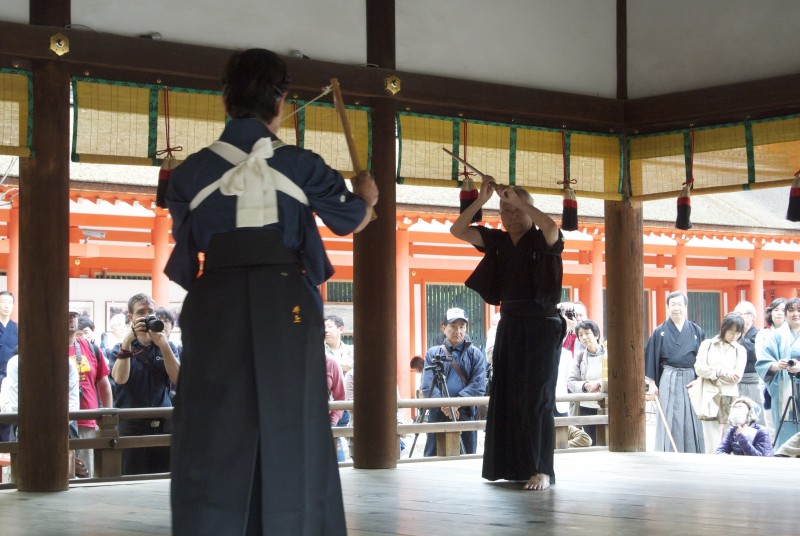
Martial arts displays are a regular feature at the shrine
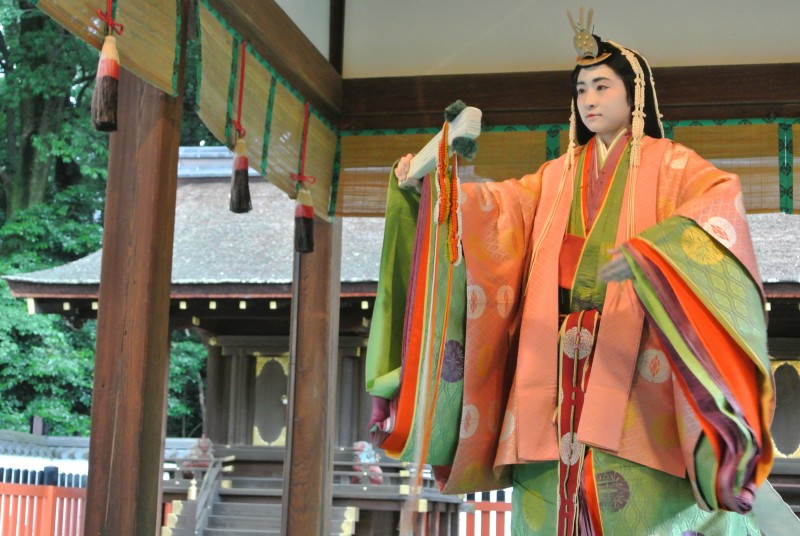
The putting on of 12 layered kimono (junihitoe) with subsequent dance display is another popular event
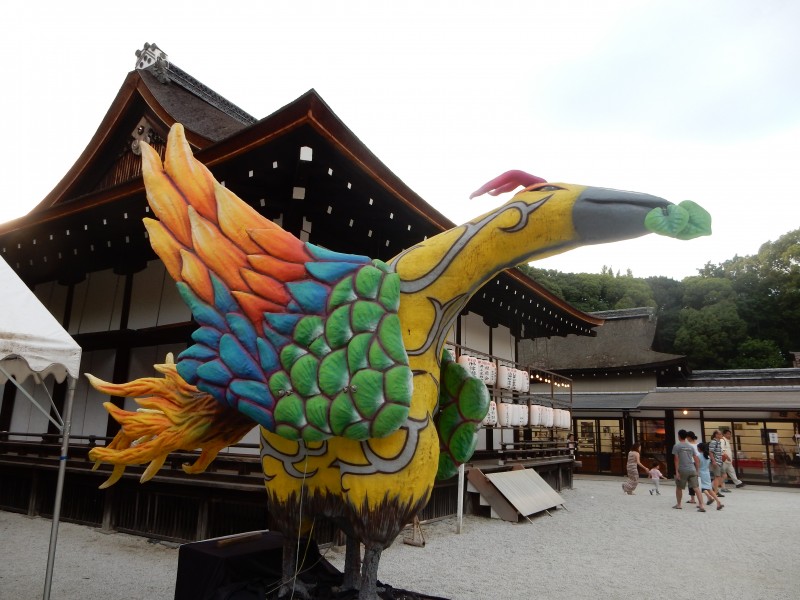
Sometimes non-traditional objects can be seen on display
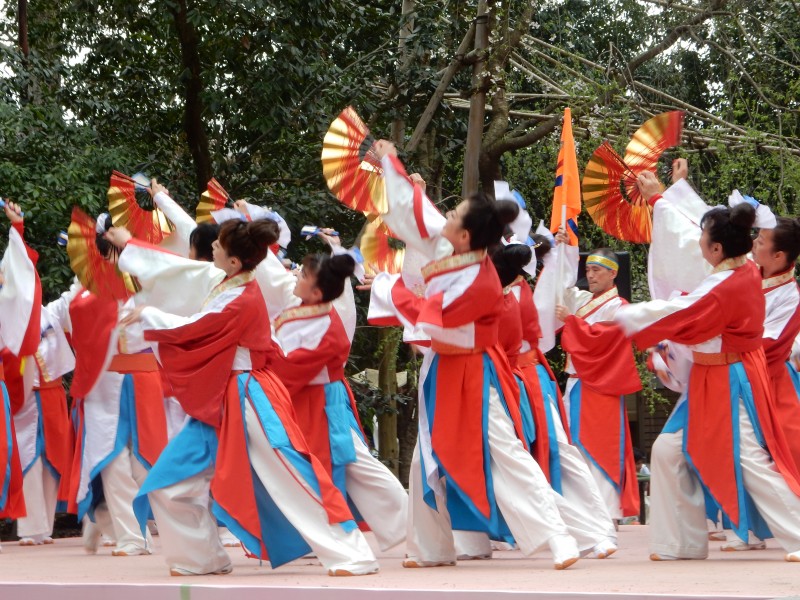
The grounds are given over to other activities too, such as jumble sales or, as here, dance compettions

Leave a Reply